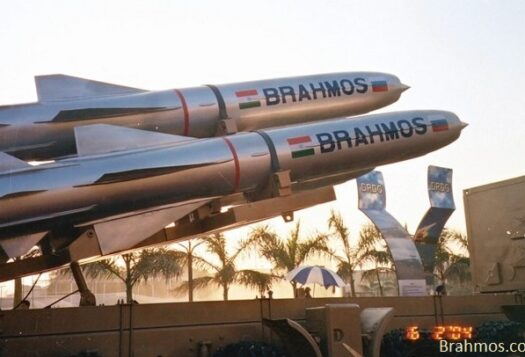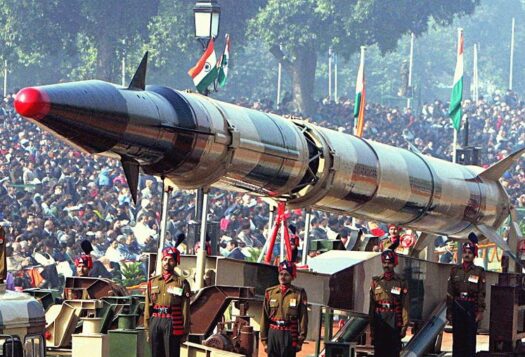
Last month, India’s newly-appointed army chief General Bipin Rawat blew the lid off of India’s Cold Start Doctrine (CSD). Former army chief General V.K. Singh had refuted the existence of the doctrine, instead pointing to a “proactive strategy.” Since then, Cold Start has remained a buzzword in South Asian strategic circles. General Rawat’s acceptance of CSD not only vindicates Pakistan’s tactical nuclear advancement but also falsifies India’s consistent denial in the past. India’s provocative war doctrine is the sole impetus behind Pakistan’s tactical nuclear advancement.
The objective of India’s Cold Start Doctrine is to launch conventional retaliatory strikes capable of causing significant damage in response to a potential terror attack from Pakistan.Hypothesizing such a Pakistan-backed terror attack and Indian strikes in response, it could lead to far-reaching consequences, particularly in the fragile South Asian environment, where these hostile neighbors are equipped with nuclear arsenal.
For a long time, India maintained that the idea of CSD lacked any political or military endorsement. For instance, when the Obama administration expressed concerns over the doctrine, then Indian defense secretary Pradeep Kumar responded with: “We don’t know what Cold Start is. Our Prime Minister has said that Pakistan has nothing to fear.” Indian policymakers maintained this denial. Timothy Roemer, former U.S. ambassador to India, in a note intended to be private but which was leaked, observed that, “several very high level officials [including the former Indian national security adviser M.K. Narayanan] have firmly stated, when asked directly about their support for Cold Start that they have never endorsed, supported or advocated for this doctrine.” Even former army chief General V.K. Singh refuted claims that such a doctrine had ever been formulated. Ironically, the Cold Start Doctrine was termed Pakistan’s “favorite bogeyman.”
In sharp contrast to official Indian claims, the Cold Start Doctrine has been a major focus of Pakistan’s strategic community. Pakistan is convinced that at any instant India can materialize its limited war doctrine. In the event of a conflict, eight integrated battle groups would penetrate 50 kilometers deep into Pakistan for limited retaliatory ground strikes.
To counter India’s dangerous option to fight a limited war, Pakistan conducted a flight test of Hatf-IX (Nasr) in April 2011, which can carry a nuclear warhead up to 60 kilometers. For Pakistani decisionmakers, low-yield nuclear weapons are necessary to halt India’s option to fight a limited war. Hence, the tactical nuclear weapons (TNW) program is instrumental in maintaining deterrence viz-a-viz a conventionally-superior India. Khalid Kidwai, adviser to Pakistan’s National Command Authority, has stated that TNWs would make war less likely between India and Pakistan. Thus, Pakistan sees its TNWs as weapons of peace not war.
Since the introduction of TNWs in the South Asian theater, Pakistan’s short-range nuclear missile program has become the epicenter of global criticism. The United States has repeatedly expressed anxiety over Pakistan’s TNW program. Though Pakistan has categorically expressed that its TNW program is a counterweight to India’s limited war doctrine, the global community remains oblivious towards India’s provocative war strategy. Lack of global attention has encouraged India to modernize its military strength for limited retaliatory ground strikes inside Pakistan.
Recently, in a clear indication of its offensive strategy, reports claimed that India is planning to deploy about 464 newly-ordered T-90MS main battle tanks (MBTs) along its western and northern borders with Pakistan. This is in addition to the tank force India already has deployed along the border area. At the same time, India has remained a leading weapons importer over the past five years. In a recent interview, General Rawat stated that India is “prepared for a two-front war,” referring to fighting Pakistan and China simultaneously.
In a crisis situation, deploying this equipment would enable India to launch rapid attacks on Pakistani territory. However, such a high intensity but premature military action could be catastrophic for the entire region.
India enjoys conventional superiority over Pakistan and the asymmetry between these rivals is increasing with each passing day. This conventional asymmetry has increased Pakistan’s reliance on its nuclear arsenal. Economically weak, Pakistan cannot afford to compete with India in conventional arms import. Therefore, Pakistan has introduced TNWs to avoid any kind of conventional confrontation with India. At the same time, without taking up massive military modernization, Pakistan continues to follow the policy of credible minimum deterrence. However, the nature of credible minimum deterrence is predicated by the evolving security threats in the region. India waging a limited war in response to a terrorist attack perceived to be backed by Pakistan is too risky: it presents the danger of inadvertent escalation, and could kill 21 million people If India materializes its offensive military doctrine, South Asian strategic stability will be jeopardized as a result of crisis escalation.
***
Image: Getty Images, Aamir Qureshi


